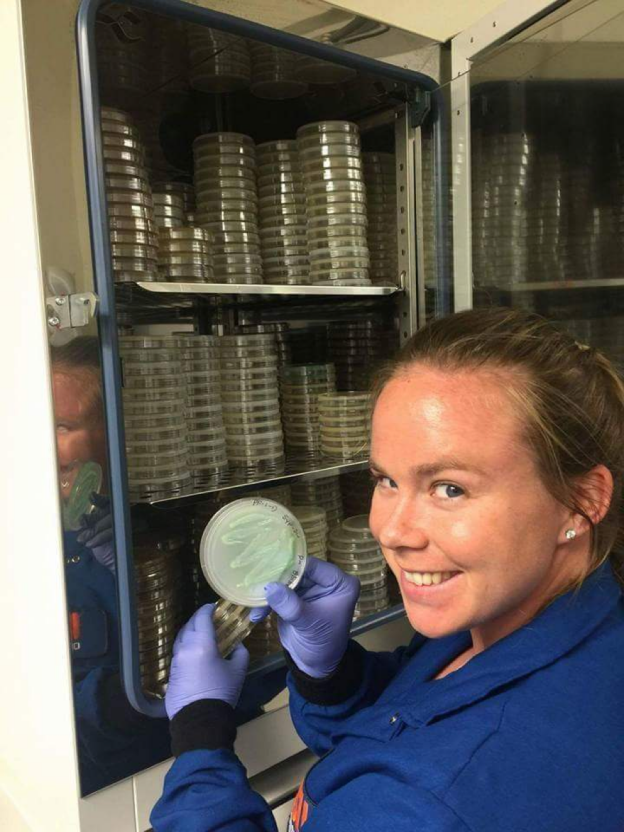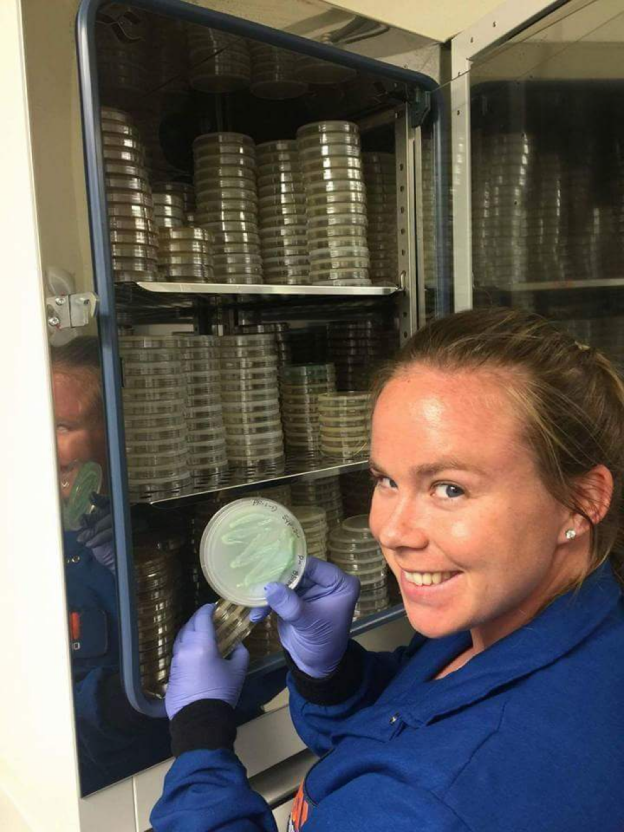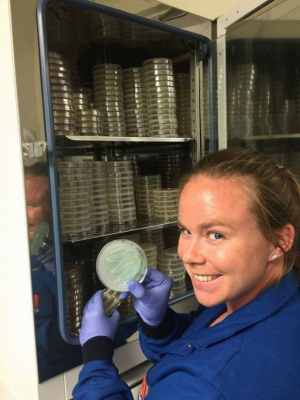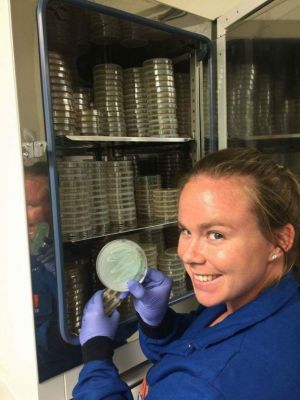Episode 1: The Mold That Keeps On Giving
November 15, 2018
All around us, plants, fungi, and bacteria are waging chemical warfare against one another to deter grazing, prevent against infection, or reduce the viability of competitor species. Us humans benefit from this. We use many of these compounds, called secondary metabolites, as antibiotics, medicines, painkillers, toxins, pigments, food additives, and more. We are nowhere close to finding all of these potentially useful compounds, particularly in marine environments where organisms can make very different types of chemicals. Could something as ordinary as a fungus from the sea provide us with the next big cancer breakthrough?
Paige Mandelare thinks so. As a fourth-year PhD student working for Dr. Sandra Loesgen in OSU’s Chemistry department, she has extracted and characterized a class of secondary metabolites from a marine fungus, Aspergillus alliaceus, isolated from the tissues of an algae in the Mediterranean Sea. After growing the fungus in the laboratory and preparing an extract from it, she tested the extract on colon cancer and melanoma cell lines. It turned out to be cytotoxic to these cancer cells. Further purification of this mixture revealed three very similar forms of these new compounds they called allianthrones. Once Paige and her research group narrowed down their structures, they published their findings in the Journal of Natural Products.
Next, she grew the fungus on a different salt media, replacing bromine for chlorine. This forced the fungus to produce brominated allianthrones, which have a slightly different activity than the original chlorinated ones. Her lab then sent two of these compounds to the National Cancer Institute, where they were tested on 60 cell lines and found to work most effectively on breast cancers.
The recent publication of Paige in her story of the allianthrones from this marine-derived fungus, Aspergillus alliaceus.Like many organisms that produce them, this wonder mold only makes secondary metabolites when it has to. By stressing it with several different types of media in the lab, Paige is using a technique called metabolomics to see what other useful compounds it could produce. This will also give insight into how the fungus can be engineered to produce particular compounds of interest.
A native Rhode Islander who moved to Florida at the age of ten, Paige has always been fascinated with the ocean and as a child dreamed of becoming a marine biologist and working with marine mammals. She studied biology with a pre-med track as an undergraduate at the University of North Florida before becoming fascinated with chemistry. Not only did this allow her to better appreciate her father’s chemistry PhD better, she joined a natural products research lab where she first learned to conduct fungal chemical assays. Instead of placing her on a pre-med career path, her mentors in the UNF Chemistry department fostered her interest in natural products and quickly put her in touch with Dr. Loesgen here at OSU.
After finishing her PhD, Paige hopes to move back east to pursue a career in industry at a pharmaceutical company or startup. In the meantime, when she’s not discovering anticancer agents from marine fungi, she participates in a master swimming class for OSU faculty, trains for triathlons, and is an avid baker.




